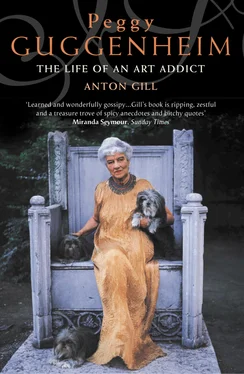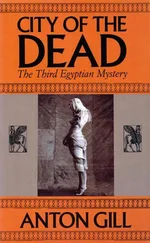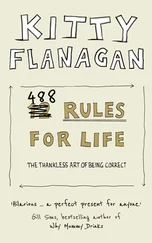The vestibule, marble-clad, contained a marble staircase which led to the piano nobile , where a large dining room ‘with panels and six indifferent tapestries’ looked southwards, while to the rear there was a small conservatory. The main floor also contained a reception room dominated by another tapestry, of Alexander the Great, and here it was that Peggy’s mother gave a weekly tea-party for the other ladies of the New York Jewish haute volée. Peggy, forced to attend these functions as a child and already feeling rebellion stirring within her, found them excruciatingly boring. This is not hard to understand, because the conversation, informed by the participants’ obsession with social standing and correctness, was always about which people were on or off the visiting list, the quality of one’s silver – it should be heavy but not look heavy – the quality but lack of ostentation of one’s dress, what jewels to wear, what colleges were really acceptable for one’s sons (Harvard and Columbia yes, Princeton no), and so on. Also important was whom to marry, and whom not to. You couldn’t marry a Gimbel or a Straus, because they were ‘storekeepers’. At the same time, because Gimbel’s and Macy’s were great rivals, no Gimbel ever married a Straus either. Then there was the question of the ‘old’ New York Jewish families and the ‘new’ ones – approximately pre- and post-1880 – a stratified snobbery which mirrored the English concept of ‘old’ and ‘new’ money, and which still exists today. The Guggenheims, arriving in New York relatively late, after the older Jewish clans had already formed their group, had to contend with this despite their wealth.
The chronicler of Jewish New York of the time, Stephen Birmingham, paints a telling picture of this closed society:
In the evenings the families entertained each other at dinners large and small. The women were particularly concerned about what was ‘fashionable’, and why shouldn’t they have been? Many of them had been born poor and in another country, and now found themselves stepping out of a cocoon and into a new and lovely light. They felt like prima donnas, and now that their husbands were becoming men of such substance, they wanted to be guilty of no false steps in their new land. They wanted desperately to be a part of their period, and as much as said so. Beadwork was fashionable. One had to do it. It was the era of the ‘Turkish corner’, and the ladies sewed scratchy little beaded covers for toss pillows. At one dinner party, while the ladies were discussing what was fashionable and what was not, Marcus Goldman rose a little stiffly from the table, folded his heavy damask napkin beside his plate, and said, ‘Money is always fashionable’, and stalked out of the room.
In her reaction to all this, shared with her father who, significantly, not only got out of it, but returned to a much more relaxed Europe, specifically France, Peggy’s individualistic nature found itself – and she was a rebel too, though a reluctant one. Hers was a mixed nature and a mixed nurture: she was born into a nouveau riche bourgeoisie, but she had peasant roots. She never succeeded in shaking off either influence, though she had more success with the former, which was imposed, than with the latter, which was inborn.
The first floor of the house contained a further grand room – a Louis XVI ‘parlor’, complete with mirrors and more tapestries. Even the furniture was covered in fake tapestry material, and every window in the house was draped with claustrophobic lace curtains in the German manner. Reading between the lines of Peggy’s reminiscences, one can sense the repugnance she felt even as she wrote her descriptions almost half a century later. The parlour also contained a bearskin rug, whose snarling, open red mouth still contained its teeth and a plaster replica of its tongue, which kept breaking off, giving the head a ‘revolting appearance’. The teeth worked loose from time to time as well, and had to be glued back in.
But this room and this floor contained poignant memories for Peggy. Apart from the moth-eaten bearskin, ‘There was also a grand piano. One night I remember hiding under this piano and weeping in the dark. My father had banished me from the table because, at the tender age of seven, I had said to him, “Papa, you must have a mistress as you stay out so many nights.”’ This innocent but perceptive remark was undoubtedly true, and in its precocious directness it gives a foretaste of the person Peggy was going to grow up to be. But there is another, pleasanter memory, which is described with keenly remembered yearning: ‘The center of the house was surmounted by a glass dome that admitted the daylight. At night it was lit by a suspended lamp. Around this was a large circular winding staircase. It commenced on the reception floor and ended on the fourth floor where I lived. I recall the exact tune which my father had invented and which he whistled to lure me when he came home at night and ascended the stairs on foot. I adored my father and rushed to meet him.’
Peggy’s parents had separate bedrooms and dressing rooms (Ben’s dressing room adjoined Florette’s bedroom, with its twin beds, in the approved nineteenth-century manner) on the third floor, and here too was the library, a necessary room in any well-heeled establishment whose owners wanted to make a good impression, though neither Florette nor Ben was a great reader. The room had a tiger-skin on the floor and four faux-ancestral portraits of Peggy’s grandparents on the walls. In this dismal place, Peggy was condemned to eat. As a child she had no appetite, so a maid stood over her while she sat at a glass-topped Louis XV table and toyed with her meal. Peggy cried in protest as the food was spooned into her, and then threw up.
Apart from her parents’ conventional and sometimes vulgar taste, it wouldn’t take a Freud to deduce that Peggy’s later love of vivid abstraction in art was a reaction to that gloomy library where she was force-fed, overseen by depressing portraits of her immediate forebears. Ben was a collector himself, and on this floor of the house a number of good paintings by Corot and a couple by Watteau hung. And the bright spot in Peggy’s day was early in the evening, when she was allowed to play in her mother’s room, lined in pink silk, as Florette had her hair brushed before dinner by her French maid, ‘or by a special hairbrusher who came in for that purpose’. She does not say if she ever shared this moment with Benita or Hazel.
The fourth floor of the mansion contained the children’s rooms, and temporarily provided a sanctum for James Seligman during his retreat from his own home to the Netherland Hotel. Here the girls were attended by a succession of governesses and nurses, and given private tuition; Peggy didn’t attend a school until she was fifteen, and in consequence looked back on a lonely and restricted childhood. Like her own mother, Florette never invited friends’ children to her house, and the sisters had only each other’s company. Benita must have been the loneliest of them, being those significant three years older than Peggy; and Peggy and Hazel seem to have been locked in a more or less unfriendly rivalry from their very earliest days.
The girls’ unhappiness was compounded by the remoteness of their parents and the severity of their upbringing – a fate shared by so many children of that era. The narrow-minded and strait-laced Prince Albert had set the tone in Victorian England, and German ideas of education and disciplinary training had crossed the Atlantic with the Jewish German immigrants. The folk-stories collected by the Grimm brothers, never intended for children, and containing a great degree of sadism and depravity, were routinely sold as nursery tales; Heinrich Hoffmann’s admittedly satirical Struwwelpeter was first published in 1845 (it is still in print) to inculcate in children a proper sense of behaviour by illustrating the dire consequences which await those who don’t toe the line. A similar tone was taken by Wilhelm Busch in Max und Moritz twenty years later. Hideous punishments await the children who in the stories commit hideous crimes.
Читать дальше












